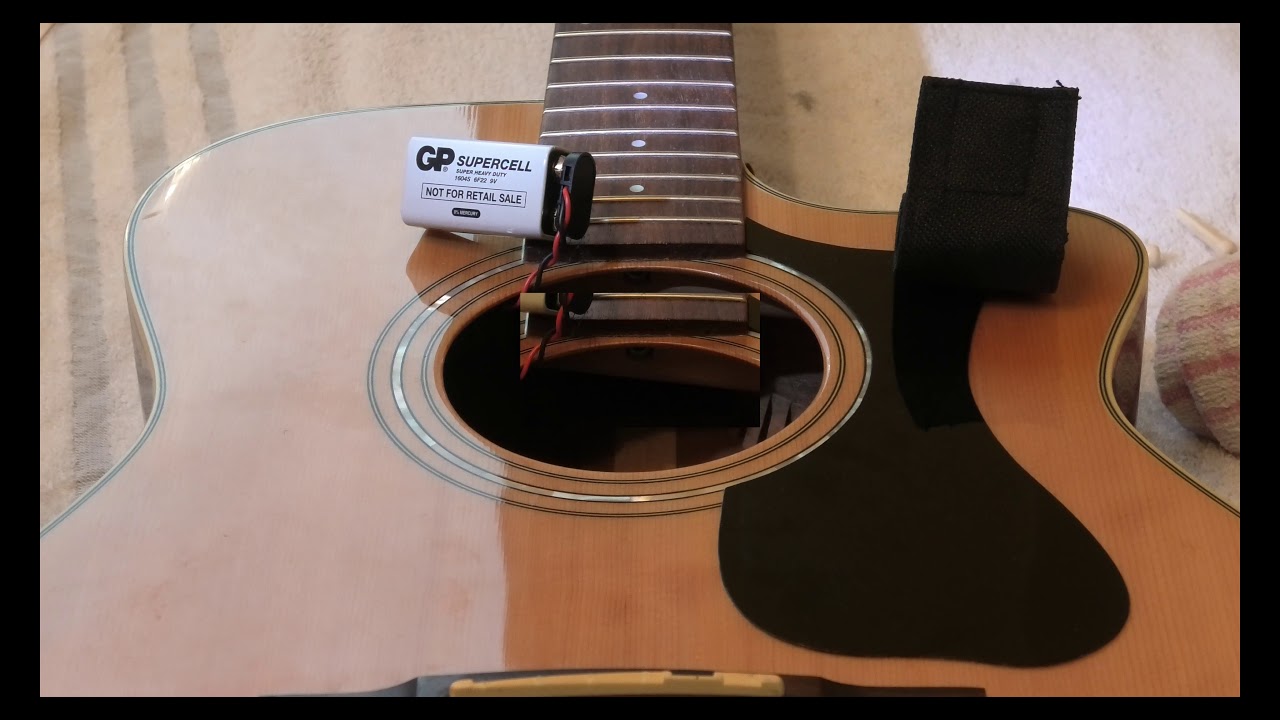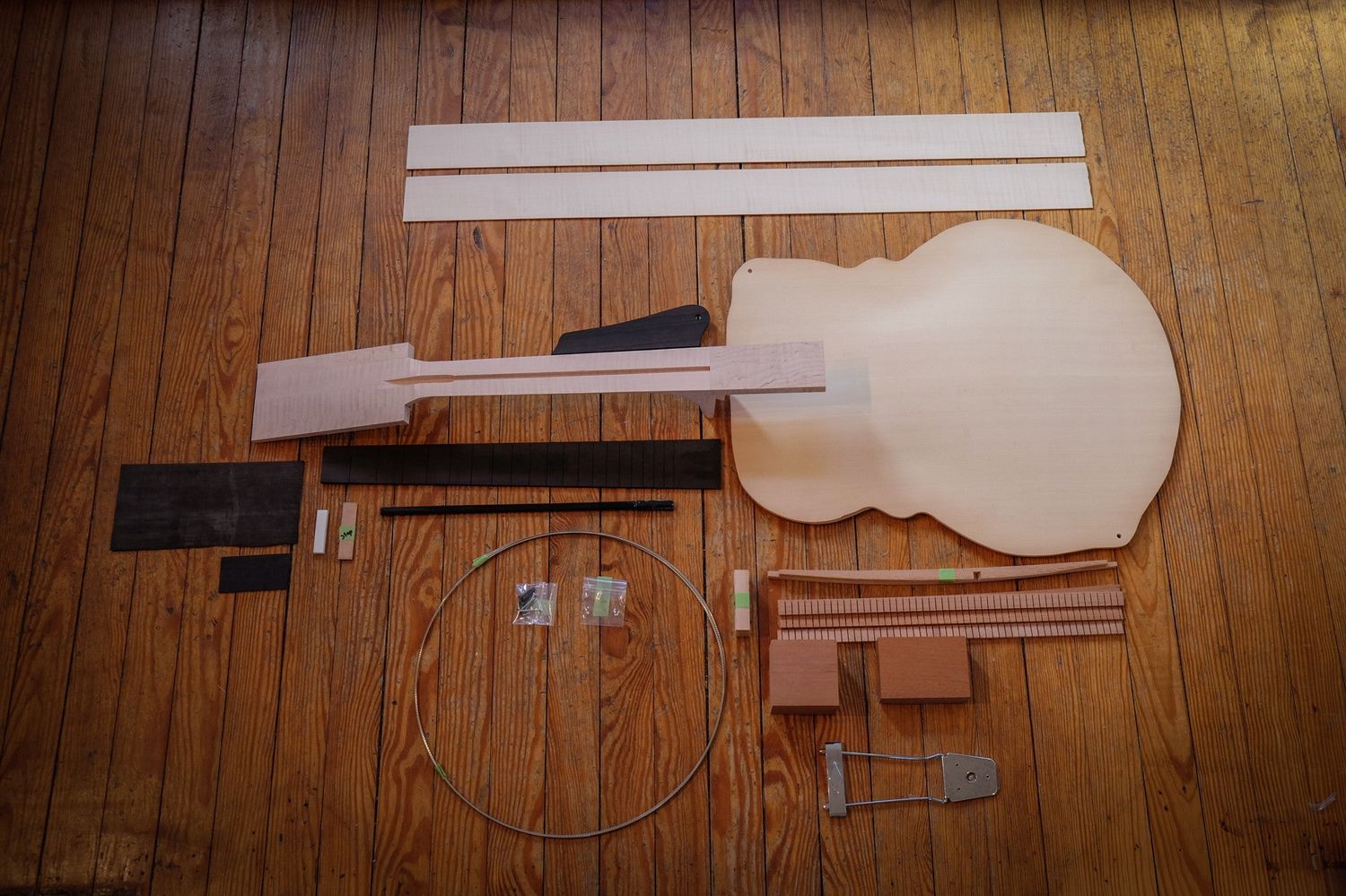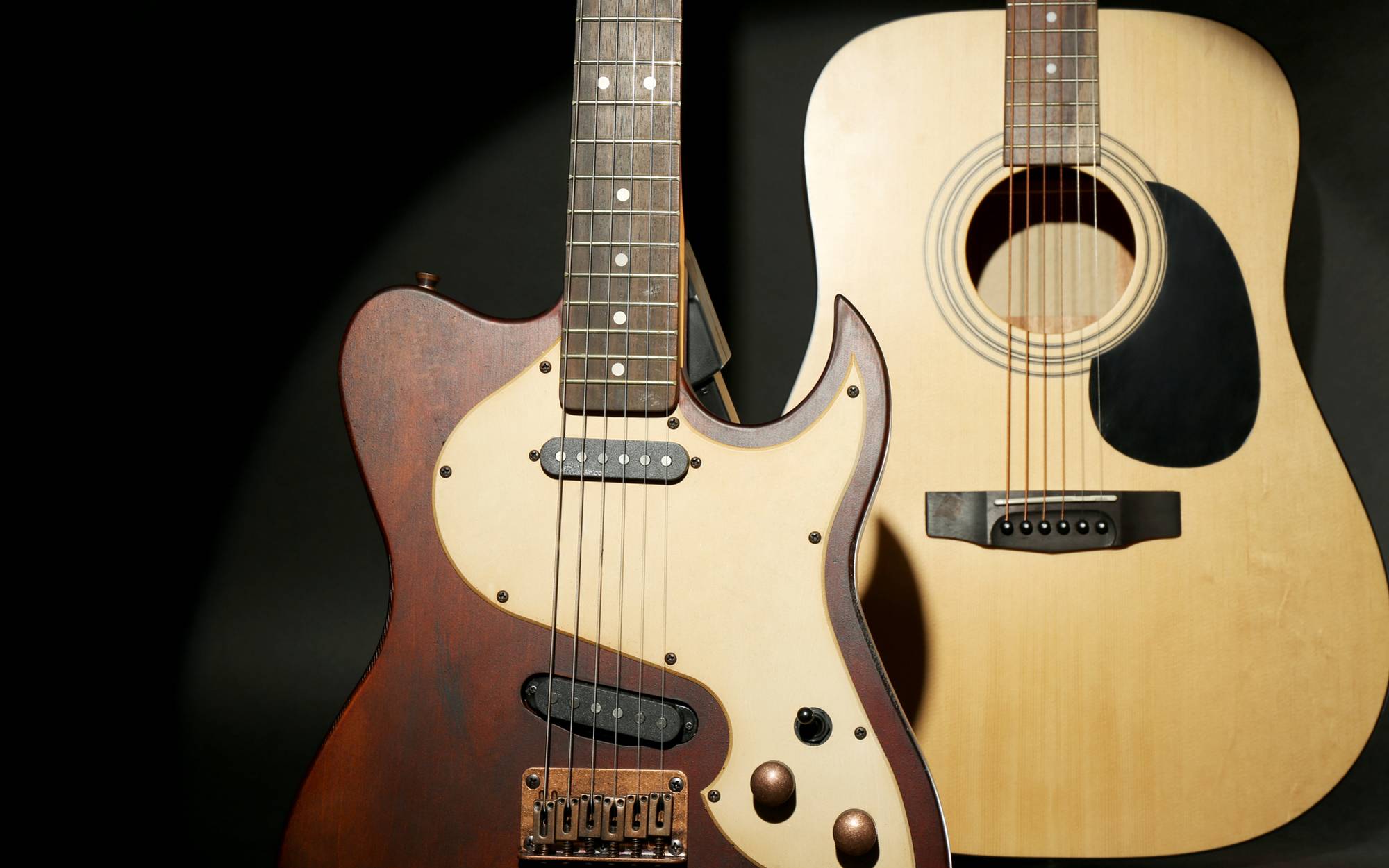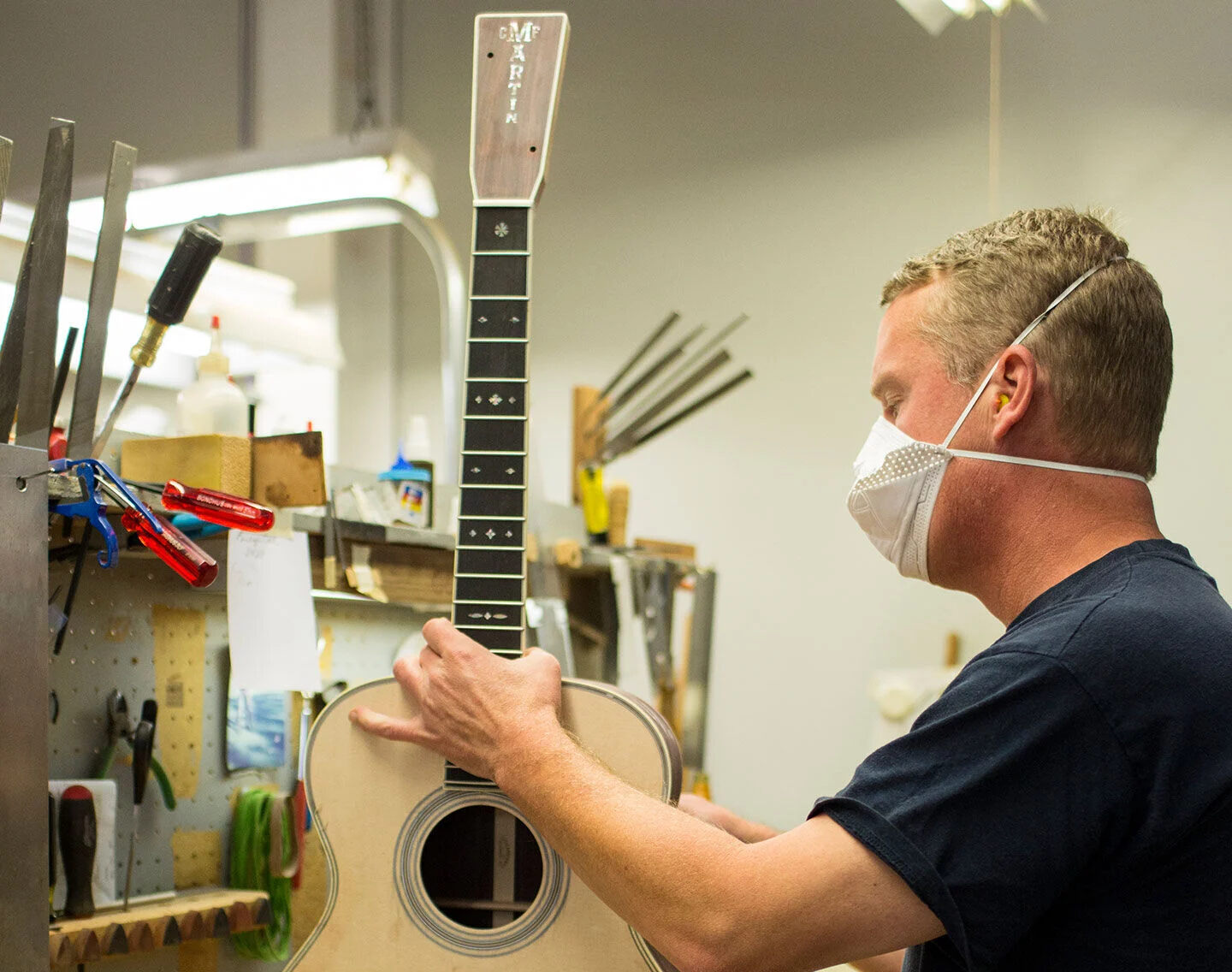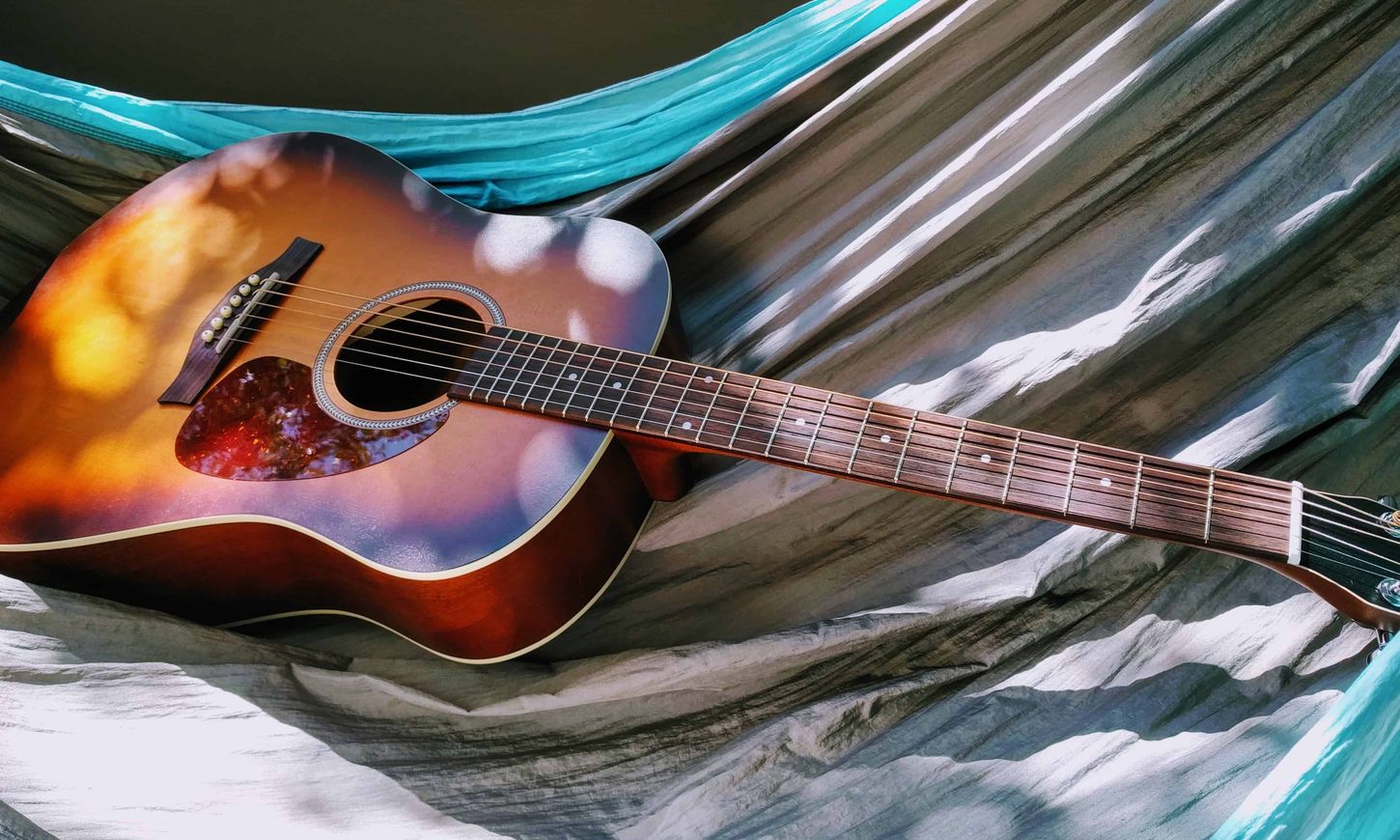Home>Production & Technology>Acoustic>How To Make An Acoustic Guitar Sound Electric In Audacity


Acoustic
How To Make An Acoustic Guitar Sound Electric In Audacity
Published: March 12, 2024
Learn how to transform the sound of your acoustic guitar to an electric one using Audacity. Enhance your music with this simple technique.
(Many of the links in this article redirect to a specific reviewed product. Your purchase of these products through affiliate links helps to generate commission for AudioLover.com, at no extra cost. Learn more)
Table of Contents
Introduction
Transforming the warm, resonant tones of an acoustic guitar into the electrifying sound of its counterpart, the electric guitar, can be a captivating endeavor. With the right tools and techniques, it's possible to infuse an acoustic guitar recording with the raw energy and edge characteristic of electric guitar performances. In this guide, we'll explore how to achieve this transformation using the versatile and user-friendly Audacity software.
By leveraging the power of Audacity, an open-source digital audio workstation, musicians and audio enthusiasts can delve into the realm of sonic experimentation. Whether you're aiming to add a touch of electric guitar flair to an acoustic recording or seeking to expand your sonic palette, Audacity provides a robust platform for shaping and sculpting sound.
Throughout this tutorial, we'll delve into the intricacies of emulating the electrifying essence of an electric guitar using an acoustic guitar recording as our starting point. From applying distortion and overdrive effects to fine-tuning EQ settings and incorporating reverb and delay, each step will contribute to the evolution of the acoustic guitar's timbre.
As we embark on this sonic journey, it's essential to approach the process with an open mind and a willingness to explore the boundless possibilities that Audacity offers. By embracing creativity and experimentation, we can unlock the potential to breathe new life into familiar sounds, transcending the conventional boundaries of acoustic and electric guitar tones.
Join us as we embark on an immersive exploration of transforming an acoustic guitar sound into a dynamic, electrifying force within the realm of Audacity. Through this transformative process, we'll uncover the artistry of sculpting sound and the exhilarating potential of blurring the lines between acoustic and electric guitar timbres.
Step 1: Importing the acoustic guitar track into Audacity
Before embarking on the journey of transforming an acoustic guitar recording into an electrifying sound reminiscent of an electric guitar, the first crucial step is to import the acoustic guitar track into Audacity. This process serves as the foundational canvas upon which we will apply a series of transformative effects and adjustments.
To initiate the process, launch Audacity and navigate to the "File" menu. Select the "Import" option and choose the acoustic guitar track from the designated location on your computer. Upon importing the track, it will appear as a waveform within the Audacity interface, ready to undergo a metamorphosis into an electric guitar-like sound.
As the acoustic guitar track materializes within Audacity, take a moment to familiarize yourself with the waveform's visual representation. This visual aspect provides insight into the amplitude and dynamics of the recording, serving as a visual guide as we progress through the subsequent steps of the transformation process.
Once the acoustic guitar track is seamlessly integrated into Audacity, it's essential to ensure that the software settings align with the desired project specifications. Verify that the sample rate and bit depth correspond to the intended parameters for the project, as these settings can significantly impact the overall sonic quality and fidelity of the transformed sound.
With the acoustic guitar track successfully imported and the software settings optimized, we have laid the groundwork for the exhilarating journey of shaping and sculpting the acoustic guitar's timbre into a dynamic, electric guitar-like sound. This pivotal step sets the stage for the transformative process that awaits, as we delve into the realm of applying distortion, adjusting EQ settings, and infusing the recording with reverb and delay effects.
As the acoustic guitar track becomes an integral part of the Audacity environment, we stand poised to embark on the transformative odyssey that will redefine its sonic identity. With the foundational elements in place, we are primed to harness the creative potential of Audacity and embark on the exhilarating pursuit of crafting an electrifying sonic experience.
The stage is set, and the acoustic guitar track awaits its metamorphosis into a captivating, electric guitar-inspired sound within the realm of Audacity. With the track seamlessly integrated into the software, we stand on the precipice of a transformative sonic journey, ready to unleash the boundless potential of creative exploration and sonic innovation.
Step 2: Applying distortion and overdrive effects
With the acoustic guitar track seamlessly integrated into Audacity, the next pivotal step in our transformative journey involves the application of distortion and overdrive effects. These effects play a pivotal role in imbuing the acoustic guitar recording with the raw, gritty edge characteristic of electric guitar tones, thereby bridging the sonic chasm between the two distinct instruments.
To initiate the process of applying distortion and overdrive effects, navigate to the "Effects" menu within Audacity and select the "Distortion" or "Overdrive" option. These effects serve as sonic catalysts, unleashing a spectrum of harmonically rich overtones and dynamic saturation that redefine the acoustic guitar's timbre.
Upon selecting the desired distortion or overdrive effect, a series of adjustable parameters will emerge, offering the opportunity to tailor the intensity and character of the sonic transformation. Experiment with the "Drive" or "Gain" controls to modulate the level of saturation and harmonic complexity, infusing the acoustic guitar recording with a newfound sense of vigor and intensity.
As the distortion and overdrive effects permeate the acoustic guitar recording, the once-resonant timbre undergoes a metamorphosis, evolving into a dynamic, electric guitar-like sound replete with searing overtones and a palpable sense of grit. The application of these effects serves as a sonic alchemical process, transmuting the acoustic guitar's inherent warmth into a fiery, electrifying force that captivates the listener's ear.
Throughout this transformative process, it is essential to maintain a balance between the application of distortion and overdrive effects, ensuring that the sonic character remains authentic and expressive. By delicately sculpting the intensity and tonal nuances of these effects, we can harness their transformative potential to imbue the acoustic guitar recording with a captivating, electric guitar-inspired timbre.
As the distortion and overdrive effects infuse the acoustic guitar recording with newfound vitality and edge, the sonic landscape undergoes a profound shift, transcending the conventional boundaries of acoustic instrumentation. This transformative step serves as a testament to the boundless creative potential of Audacity, empowering us to redefine sonic boundaries and craft a captivating, electric guitar-like sound from its acoustic counterpart.
Step 3: Adjusting EQ settings to mimic electric guitar tones
As we continue our transformative journey within Audacity, the next pivotal step involves the meticulous adjustment of EQ settings to emulate the distinctive tonal characteristics synonymous with electric guitar tones. This process serves as a nuanced exploration of sonic sculpting, enabling us to refine the frequency response of the acoustic guitar recording and imbue it with the signature timbral nuances associated with electric guitar performances.
Upon delving into the EQ settings within Audacity, we are presented with a multifaceted array of frequency bands and parameters that afford us the opportunity to shape the tonal profile of the acoustic guitar recording. By strategically manipulating the EQ bands, we can accentuate the midrange frequencies, sculpt the presence of the high-end harmonics, and refine the low-end resonance, thereby aligning the sonic character with the evocative essence of electric guitar timbres.
To commence the process, we may opt to emphasize the midrange frequencies within the EQ spectrum, imparting a sense of assertive presence and articulation to the acoustic guitar recording. By delicately boosting the midrange bands, we can instill a sense of clarity and definition, mirroring the characteristic midrange prominence inherent in electric guitar tones.
Furthermore, the manipulation of high-end frequencies within the EQ settings presents an opportunity to infuse the acoustic guitar recording with shimmering harmonics and crystalline articulation reminiscent of electric guitar performances. By refining the presence of high-end frequencies, we can introduce a captivating brilliance and sparkle to the sonic landscape, elevating the acoustic timbre to mirror the scintillating allure of electric guitar tones.
Simultaneously, the judicious adjustment of low-end frequencies within the EQ settings enables us to cultivate a resonant foundation that emulates the robust low-end response associated with electric guitar timbres. By refining the low-end resonance, we can instill a sense of depth and weight, fortifying the sonic foundation and bestowing the acoustic guitar recording with a commanding presence akin to its electric counterpart.
As the EQ settings undergo meticulous refinement, the acoustic guitar recording undergoes a profound metamorphosis, transcending its inherent tonal characteristics and embracing the evocative essence of electric guitar timbres. This transformative process serves as a testament to the boundless creative potential of Audacity, empowering us to redefine sonic boundaries and craft a captivating, electric guitar-like sound from its acoustic counterpart.
In the wake of the EQ adjustments, the acoustic guitar recording resonates with a newfound sense of dynamism and expressiveness, mirroring the captivating tonal nuances synonymous with electric guitar performances. This transformative step stands as a testament to the transformative power of sonic sculpting, as we harness the creative potential of Audacity to reimagine the sonic identity of the acoustic guitar and usher it into the realm of electrifying musical expression.
Step 4: Adding reverb and delay for a fuller sound
In the pursuit of crafting an electrifying sonic experience within Audacity, the integration of reverb and delay effects stands as a pivotal step in elevating the acoustic guitar recording to new heights of sonic richness and depth. These effects, renowned for their capacity to imbue recordings with spatial dimension and atmospheric allure, serve as transformative tools in sculpting a captivating, electric guitar-inspired timbre from its acoustic origins.
The addition of reverb, a hallmark effect renowned for its ability to simulate acoustic environments and infuse recordings with a sense of spaciousness, introduces a luscious sense of ambience to the acoustic guitar recording. By delicately modulating the reverb parameters within Audacity, we can envelop the sonic landscape in a captivating halo of reflections, imparting a sense of depth and dimension that transcends the confines of traditional acoustic instrumentation. The judicious application of reverb serves to imbue the acoustic guitar recording with a captivating sense of presence and spatial allure, mirroring the atmospheric resonance characteristic of electric guitar performances.
Simultaneously, the incorporation of delay effects within Audacity offers a compelling avenue for infusing the acoustic guitar recording with rhythmic intricacy and textural allure. By harnessing the dynamic potential of delay, we can introduce captivating echoes and rhythmic repetitions that bestow the sonic landscape with a sense of movement and depth. The interplay of delayed reflections serves to augment the acoustic guitar recording with a mesmerizing sense of rhythmic propulsion, elevating its sonic character to mirror the entrancing allure of electric guitar performances.
As the reverb and delay effects intertwine within the sonic tapestry of the acoustic guitar recording, a transformative metamorphosis unfolds, transcending its inherent timbral characteristics and ushering it into the realm of electrifying musical expression. The fusion of spatial ambience and rhythmic intricacy imbues the acoustic guitar recording with a newfound sense of dynamism and allure, culminating in a sonic landscape that resonates with captivating depth and expressiveness.
In the wake of the integration of reverb and delay effects, the acoustic guitar recording emerges as a dynamic, electric guitar-inspired sonic entity, replete with spatial allure and rhythmic intrigue. This transformative step stands as a testament to the boundless creative potential of Audacity, empowering us to redefine sonic boundaries and craft a captivating, electric guitar-like sound from its acoustic counterpart.
Step 5: Finalizing the electric guitar sound
As we approach the culmination of our transformative odyssey within Audacity, the pivotal step of finalizing the electric guitar sound beckons us to refine and polish the sonic tapestry that has emerged from the transformative processes. This stage serves as the crowning moment, wherein we meticulously sculpt and shape the acoustic guitar recording into a dynamic, electrifying force that resonates with the evocative essence of electric guitar performances.
To commence the process of finalizing the electric guitar sound, we embark on a nuanced exploration of sonic refinement, delicately balancing the transformative effects and adjustments that have imbued the acoustic guitar recording with its newfound electric guitar-inspired timbre. This stage calls for a discerning ear and a keen sense of sonic artistry, as we navigate the sonic landscape to ensure a harmonious fusion of expressive depth and captivating allure.
Central to the process of finalization is the meticulous evaluation of the cumulative effects and adjustments applied throughout the transformative journey. By attentively scrutinizing the interplay of distortion and overdrive effects, the nuanced EQ adjustments, and the integration of reverb and delay, we endeavor to ensure a cohesive sonic narrative that resonates with expressive dynamism and sonic richness.
Furthermore, the finalization stage invites us to engage in a process of sonic refinement, delicately fine-tuning the parameters of each transformative effect to achieve a harmonious sonic balance. This entails a judicious modulation of distortion and overdrive intensity, a subtle reassessment of EQ settings to refine tonal nuances, and a meticulous adjustment of reverb and delay parameters to imbue the sonic landscape with spatial allure and rhythmic intricacy.
As the final touches are delicately applied, the acoustic guitar recording undergoes a profound metamorphosis, transcending its original timbral identity and emerging as a captivating, electric guitar-inspired sonic entity. The culmination of the finalization stage heralds the realization of our sonic vision, as the acoustic guitar recording stands transformed into a dynamic force that resonates with the raw energy and expressive allure characteristic of electric guitar performances.
In the wake of the finalization stage, the sonic landscape reverberates with a newfound sense of depth, expressiveness, and allure, mirroring the captivating essence of electric guitar timbres. This transformative process stands as a testament to the boundless creative potential of Audacity, empowering us to redefine sonic boundaries and craft a captivating, electric guitar-like sound from its acoustic counterpart.
Conclusion
In the wake of our transformative odyssey within the realm of Audacity, we emerge with a profound appreciation for the boundless potential of sonic sculpting and creative exploration. Through a series of meticulous steps, we embarked on a journey to transform an acoustic guitar recording into a dynamic, electrifying force that resonates with the evocative essence of electric guitar performances.
From the foundational step of importing the acoustic guitar track into Audacity to the transformative application of distortion and overdrive effects, the meticulous adjustment of EQ settings, and the integration of reverb and delay effects, each stage of the process contributed to the evolution of the acoustic guitar's timbre. As we navigated the sonic landscape, delicately shaping and refining its sonic character, we witnessed the emergence of a captivating, electric guitar-inspired sound that transcended the conventional boundaries of acoustic instrumentation.
The culmination of our transformative journey unfolded in the finalization stage, wherein we meticulously refined and polished the sonic tapestry, ensuring a harmonious fusion of expressive depth and captivating allure. Through a discerning ear and a keen sense of sonic artistry, we endeavored to realize our sonic vision, culminating in the emergence of an electrifying sonic entity that resonates with the raw energy and expressive allure characteristic of electric guitar performances.
As we reflect on this transformative process, we are reminded of the exhilarating potential that resides within the realm of Audacity. The software, with its versatile array of effects and intuitive interface, serves as a catalyst for sonic innovation, empowering us to redefine sonic boundaries and craft captivating, electric guitar-like sounds from their acoustic origins.
In the wake of our transformative journey, we stand poised to embark on further sonic explorations, armed with a newfound appreciation for the artistry of sculpting sound. The electrifying sonic entity that has emerged from the transformative process stands as a testament to the transformative power of creative exploration and the boundless potential of Audacity as a platform for sonic innovation.
As we conclude this transformative odyssey, we carry with us a profound sense of creative fulfillment and a renewed passion for sonic experimentation. The journey to transform an acoustic guitar sound into an electric guitar-inspired sonic force has not only expanded our sonic palette but has also illuminated the transformative potential that resides within the realm of Audacity, inviting us to continue pushing the boundaries of sonic innovation and creative expression.




